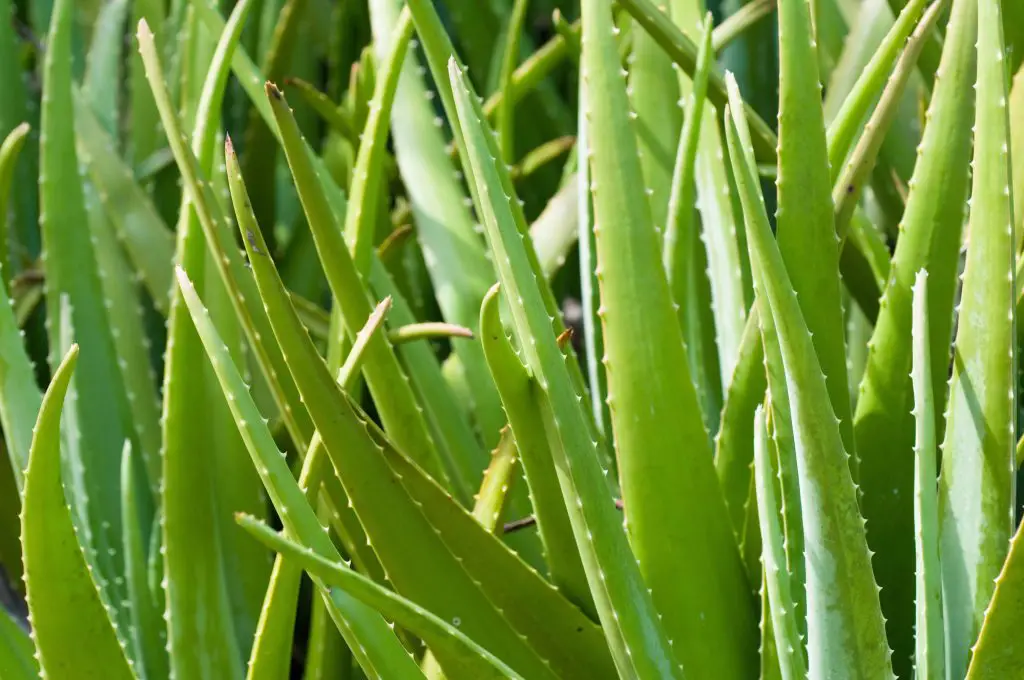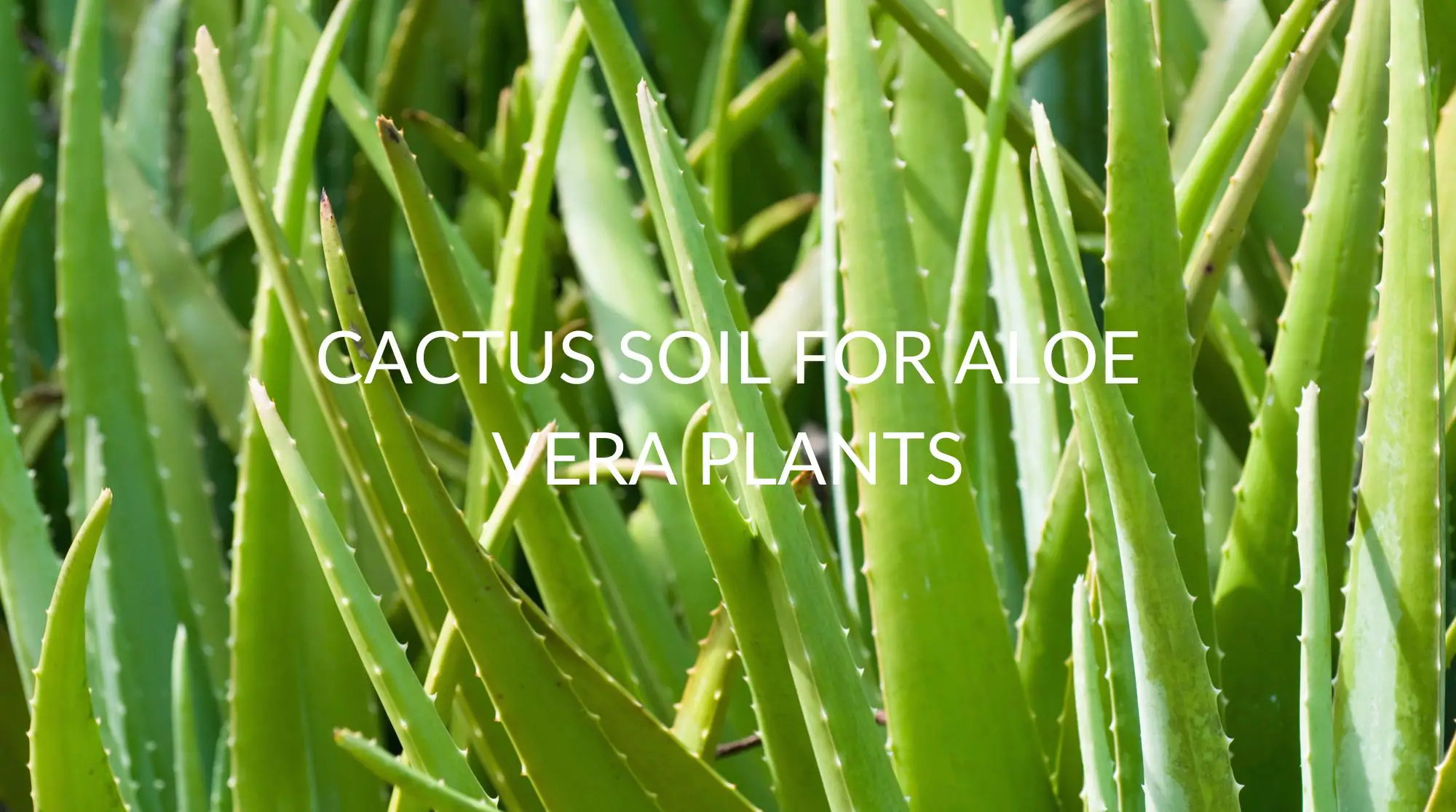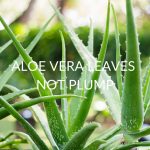Aloe is a succulent that requires coarse, gritty soil with significant drainage and aeration. Premixed Succulent or cactus soil is generally adequate for Aloe. You can make your own Aloe Vera soil with a blend of potting soil, gravel or coarse sand, and perlite or pumice.
If you are the new owner of an Aloe Vera plant, congratulations! Aloes are unique plants that add a nice dimension to any indoor succulent garden. Plus, you can use Aloe on your cuts, scrapes, and sunburns.
If you want to keep your Aloe healthy, the soil is of the utmost importance. Aloes are easy to grow, but if they sit in soil that is too damp, they can easily develop root rot. Remember that these are desert plants that are suited to sandy soil, rare watering, and low nutrient levels.
It is imperative that you get the soil right for your Aloe, so read on for information on the best Aloe Vera soil and information on how to make your own succulent soil.
What Type Of Soil Is Best For Aloe Vera Plant?
Aloe Vera is a succulent, which means that it is accustomed to soaking up and retaining a small amount of water rather than requiring frequent watering. Similar to cactus, a succulent may only need to be watered once a month or even less.
Since Aloe is a desert-type plant, its roots are not designed to sit in damp soils for a long time. For that reason, you will need to make sure your Aloe soil has excellent drainage and aeration. You can use a premade cactus or succulent soil or make your own soil at home.
What To Consider When Choosing The Best Soil For Aloe Vera
Drainage
Adequate drainage is the most important consideration when choosing Aloe soil. Excess water has to drain out of the soil so that the roots don’t get waterlogged and rot. That being said, the soil has to retain enough water that the plant has time to absorb what it needs.
Water should be able to flow into the soil enough to saturate the roots, but then it should be able to drain out adequately to let the soil dry thoroughly and evenly between waterings.
When you water your plant, you will want to soak it thoroughly and then let it drain completely.
Texture
One way to get adequate drainage is to achieve the correct texture of the soil. If you are making succulent soil at home, you can experiment with this as you go.
Succulent and cactus soil is a mixture of organic material (dead leaves, sticks, bark, compost) and inorganic (mineral) material (rock, pebbles, sand, perlite, pumice). Most succulent soils contain more inorganic material (or more chunky material) so that water and air can flow through more freely.
Nutrients
Succulents are desert plants that are used to living in soils that are not nutrient-rich. For this reason, you will want to plant Aloe in soil that mimics this nutrient density. Regular potting soil is made of lots of organic matter (leaves, compost, etc.) and, for that reason, contains a lot of nutrients.
Succulents aren’t designed to soak up that many nutrients, and the excess nitrogen in the soil may cause the plant to have stunted growth. The solution to this is to add mineral material.

Compaction
Soil that has too much organic matter may also become compacted in your pot. When this happens, air and water cannot penetrate into the soil and reach the roots.
This commonly happens when the plant hasn’t been watered in a long time. If you notice that the water is just running off the top of your soil, rather than soaking into it, or if you notice that it just runs down the side of the soil and out the drainage holes, your soil is compacted.
Obviously, if your soil is compacted, water isn’t reaching the roots even if you are watering your plant regularly. Again, the solution is to add additional mineral material.
Fertilizer
Some premixed soils contain fertilizer premixed into the soil. This is good for some plants, but Aloe is somewhat sensitive to fertilizer and requires very little. You may want to have more control over the amount of fertilizer your plant is getting. (Remember, these plants grow in nutrient-poor soils.)
If you can, look for succulent or cactus soil without fertilizer, and add your own liquid fertilizer in the summer as needed.
Cost
Many gardeners swear that making their own succulent soil saves money. All you need is the basic ingredients, and you can mix them yourself easily. You may already have potting soil for your other houseplants, so if you make your own, you just need to buy small amounts of other ingredients.
You may even have access to free coarse sand or gravel, and if you have healthy soil in your garden, you may be able to use that instead of potting soil.
Can I Use Cactus Soil For Aloe Vera?
Yes! Cactus grows in very similar conditions to Aloe Vera, so you can swap cactus soil with succulent soil. Many soils are sold as succulent and cactus blends.
Some gardeners that mix up their own soils will use a slightly higher percentage of organic material in succulent soil vs. cactus soil, though this will depend on the type of succulents the soil is used for.
Aloe requires a significant amount of drainage (it cannot tolerate damp soil), so it will thrive in the sandier cactus soil just like any cactus.
How To Make Cactus Soil For Aloe Vera
Cactus or succulent soil is a mixture of three textures: potting soil, coarse materials like sand or gravel, and pumice or perlite.
You can most definitely mix up your own soil for succulents like Aloe without too much trouble. All the materials you need can be found at gardening centers, so if you are going out to buy a succulent blend anyway, why not try to make your own? You can always add a little more of this or that to customize the recipe.
The advantage of DIY soil is that you have more control over what goes into your soil, and you can make it as grainy as you want, depending on your growing conditions. If you live in a very dry place with great airflow, you probably won’t need excess drainage.
If you often forget to water your plants, you may want to include slightly more potting soil to retain just a bit more water.
Potting Soil
Potting soil is decayed organic or plant matter. This part of the soil will provide the nutrients that your Aloe needs and helps hold water so your Aloe roots can absorb water.
Even though you are going to add coarse materials to your potting soil, you will want to start with something that isn’t too dense or black in the beginning. Most standard houseplant mixes will work fine.
Soil that is designed to retain water is not a good choice, and avoid anything that contains vermiculite, which retains moisture.
You can also dig up dirt from your garden and give that a try. However, if your soil is very compact, you will need to add more grainy materials to your mix. Potting soil often includes a lot of pine bark and other chunky materials that may not be present in your garden dirt.
Coarse Material
Your soil needs to have a grainy texture. Coarse material such as coarse sand, lava rock, or gravel will ensure that your soil has good drainage and aeration since these ingredients do not hold water. Be careful not to use fine sand, which may compact the soil and reduce drainage.
In addition to providing drainage, coarse materials add weight to the soil that will support the roots and keep larger succulents like Aloe from tipping.
Coarse material may also include organic materials such as bark and peat moss.
In addition, you can use turface, poultry grit, crushed granite, or aquarium rock as coarse materials.
Pumice or Perlite
Pumice and Perlite also aid in the drainage and aeration of soils. Pumice is a volcanic rock, and perlite is a volcanic glass. Both are available at garden centers, though perlite might be easier to find.
Both types contain tiny air pockets that will help aerate your soil.
Pumice is slightly heavier than perlite, which means it may not move around like perlite when you are watering your plant. Perlite has the texture of tiny bits of styrofoam and sometimes floats when watered.
What is the Right Mix for Succulent Soil?
The mix of these three types of ingredients is an art that gardeners perfect over time, though you can start with these general formulas.
For most succulents, use two parts organic material and coarse material to one part pumice or perlite.
Or, if you live in a very humid climate or have limited airflow, you may want soil with even better drainage. In this case, you might try a mixture of three parts organic material, three parts coarse material, and two parts pumice/perlite.
The basic formula is one-third organic material, and two-thirds mineral material.
The soil should feel grainy and fall apart easily.
Tips for Making Homemade Soil
If you are the kind of person who lovingly overwaters your plants, you may want to mix your soils with larger portions of coarse materials that will drain off any excess water.
Don’t use anything that contains fertilizer because salts from fertilizers can build up in Aloe soils. You can always fertilize your Aloe later.
Make sure your materials are clean. You would not want to add rock or sand that has been treated with salt or other chemicals since Aloe roots are sensitive to chemical imbalances in the soil.
How to Make Homemade Soil
All you really need to make soil is a measuring container or scoop, your ingredients, a trowel to mix, a container, and maybe a dust mask since all these ingredients give off tiny particles. A bucket or tray will work to mix the soil. You can store it in a plastic bag, bin, or bucket.
Measure the potting soil into the container first. Then add the coarse materials and mix them together, making sure you mix in all the sand thoroughly if using. Last, add half the pumice or perlite. If you feel your soil needs more grainy texture, add the rest.
Remember, this isn’t rocket science or chemistry. Run the soil through your fingers to see if it feels gritty and grainy. It shouldn’t have large chunks.
FAQ
Can I Use Any Soil For Aloe Vera?
Aloe has to be grown in soil that has adequate drainage, so its roots have access to air and water. It needs to be able to soak up water and nutrients as required, but not sit in damp soil. For this reason, you need to use succulent or cactus soil and never straight garden soil or potting soil.
Any Aloe soil must be coarse and gritty.
Can You Use Regular Potting Soil For Aloe Vera?
You can, but you will need to add some type of inorganic mineral material so that water can flow out of the soil. This could be a mixture of coarse sand, gravel, pebbles, lava rock, pumice, or perlite.
Generally, you will want a mix of one-third potting soil to two-thirds mineral material. Regular potting soil should be fine, but make sure it doesn’t contain any moisture-retaining elements.
Conclusion
If you are just starting out with a succulent garden, you should be able to grow your charming Aloe in any succulent or cactus premix you find at a garden center or big box store.
If you have been growing succulents and cactus successfully for a while and want to try the next challenge of mixing your own soil, you may be surprised to find how easy it is. In fact, you may get so good at it that you mix your custom soil for each of your succulents.








